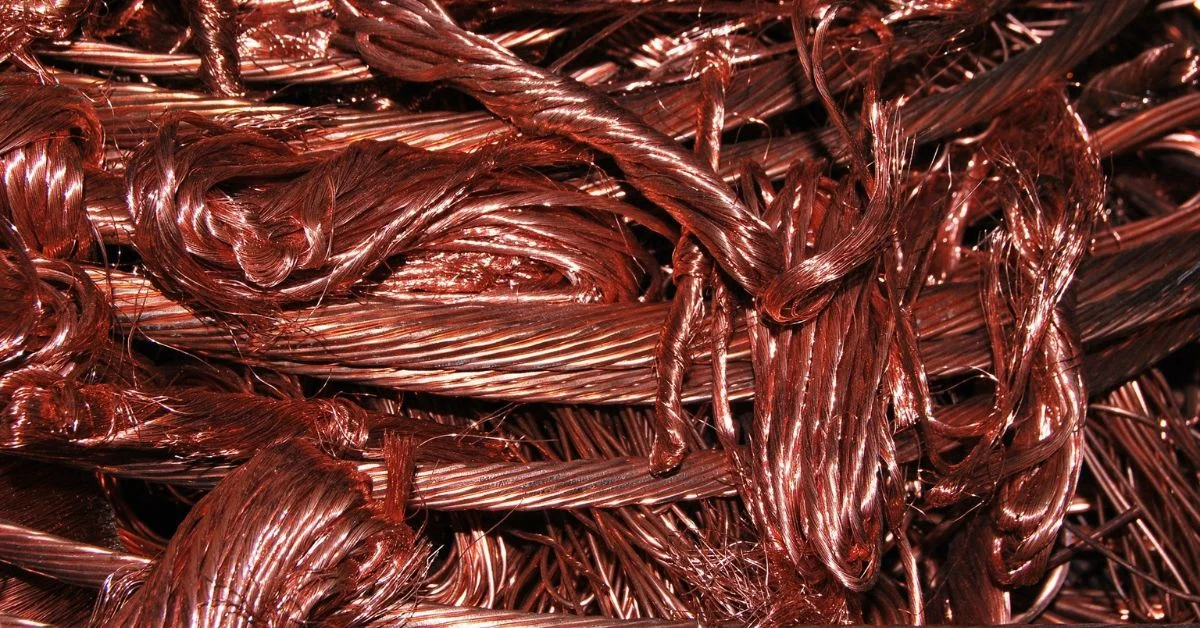In a world where audio experiences have become more intimate, precise, and high-definition than ever before, the materials used in your cables matter more than you might expect. One of the most debated and often misunderstood aspects of audio fidelity is the kind of copper used in cables. Specifically, the conversation centers around two acronyms: OCC and OFC.
OCC (Ohno Continuous Cast) and OFC (Oxygen-Free Copper) refer to two types of high-conductivity copper used in audio cables, speaker wires, and other signal pathways. While both are superior to standard copper, they differ in purity, crystal structure, signal performance, and cost. The choice between them is more than just technical—it’s about how much transparency and resolution you expect from your audio equipment.
In this article, we explore the distinctions, applications, and significance of OCC and OFC copper in 2025. Whether you’re an audiophile, an audio engineer, or just someone seeking better sound quality, understanding these materials can lead to more informed decisions—and better listening experiences.
What Is OFC Copper?
OFC (Oxygen-Free Copper) is a refined form of copper that contains a very low level of oxygen—typically less than 0.001%. It is manufactured using a process that reduces the presence of copper oxides and other impurities, which can interfere with conductivity.
Key Properties of OFC:
- Purity Level: Usually 99.95%–99.99%
- Improved Conductivity: Compared to standard copper, OFC offers around 1–2% better conductivity.
- Affordable Performance: It provides good signal transmission at a relatively low cost.
- Widespread Use: Found in mid-range to high-end audio equipment, car audio systems, and power cables.
OFC is a workhorse metal in the audio world. It’s the baseline for quality in premium audio cables and is generally considered a significant upgrade from standard copper (which contains more oxygen and more grain boundaries).
What Is OCC Copper?
OCC (Ohno Continuous Cast) Copper is a specialized ultra-high-purity copper developed by Professor Atsumi Ohno in Japan during the 1980s. The process uses a slow, continuous casting technique that allows the copper to form as a single-crystal or long-crystal structure, virtually eliminating grain boundaries.
Key Properties of OCC:
- Purity Level: Often 99.999% or higher (5N or 6N copper)
- Grain Structure: Single or near-single crystal, minimizing signal disruption
- Unmatched Conductivity: Slightly better than OFC, but significantly better in terms of signal integrity over long distances
- Minimal Signal Loss: Especially in high-frequency transmission and analog audio
- Used In: High-end audio interconnects, reference speaker cables, and digital coaxial cables
OCC copper is often marketed to audiophiles and professionals seeking absolute signal fidelity. It’s more expensive and difficult to produce, but proponents claim it delivers clearer, more transparent audio—particularly noticeable in high-resolution systems.
How OCC and OFC Copper Differ Structurally
At the microscopic level, the key distinction between OCC and OFC lies in their crystal grain boundaries.
- OFC Copper has thousands of tiny grains, each acting like a micro-barrier to the flow of electrical current. While the overall conductivity is still high, signal reflections and micro distortions can occur at each boundary.
- OCC Copper, by contrast, has grains that can be over 125 meters long, or in some cases, a single continuous crystal. This dramatically reduces grain boundaries, allowing electrons to flow more smoothly and consistently.
This structural difference becomes particularly important in analog signal transmission, where preserving the waveform integrity is critical. Even tiny distortions at grain boundaries can alter tone, imaging, and spatial detail—qualities that audiophiles prize.
OCC vs OFC: Which One Sounds Better?
In blind listening tests conducted by audio labs, the differences between OCC and OFC become most noticeable under specific conditions:
- High-resolution playback (e.g., 24-bit/192kHz audio or DSD)
- Transparent DACs (Digital-to-Analog Converters)
- Reference-grade amplifiers and speakers
- Balanced cable architectures
OFC Performance:
- Warm and smooth
- Slight signal degradation over long runs
- Excellent value for cost
OCC Performance:
- Clearer transient response
- Tighter bass, improved imaging
- Virtually zero phase shift or distortion
However, the average listener using consumer-grade equipment may not notice a dramatic difference. But for those who build their systems around sonic detail and realism, OCC offers the edge.
Cost Considerations in 2025
In 2025, copper prices have stabilized somewhat after a decade of volatility. Still, OCC remains considerably more expensive than OFC, due to:
- Slower casting process
- Lower production yields
- Specialized manufacturing equipment
- Limited number of certified suppliers
Here’s a rough comparison:
| Copper Type | Price Range (per foot in consumer cable) |
|---|---|
| OFC | $1 – $5 |
| OCC | $8 – $50+ |
The high-end market is increasingly dominated by OCC, but OFC remains dominant in mid-tier consumer audio products due to its reliability and affordability.
OCC and OFC in Non-Audio Applications
Though audio is where most enthusiasts encounter OCC and OFC, these copper types are used elsewhere:
OCC Copper:
- Space-grade electronics
- Military radar systems
- Cryogenic applications
- MRI systems (where signal integrity is critical)
OFC Copper:
- Power transmission
- Electric vehicles (EVs)
- Renewable energy infrastructure (e.g., solar inverters)
Their structural and purity advantages play a role in thermal stability, signal timing, and energy efficiency, even beyond the audio realm.
The 2025 Landscape: OCC and OFC in Modern Cable Design
Today’s cables are more than just copper strands. In 2025, many premium manufacturers combine OCC or OFC with advanced insulation and shielding materials:
- Teflon, PVC-free polymers, or natural rubber for dielectric stability
- Silver plating to enhance high-frequency performance
- Active shielding that repels EM interference in urban environments
The result is an ecosystem where OCC and OFC copper types function as the core of complex engineering marvels designed to maintain the purity of a signal from source to speaker.
How to Choose Between OCC and OFC
When selecting between OCC and OFC copper for audio applications, consider:
- Budget: OFC offers strong performance at a lower cost. OCC is premium-priced for marginal gains.
- System Resolution: Higher-resolution systems can reveal the benefits of OCC more clearly.
- Cable Length: The longer the cable run, the more OCC’s low resistance and reduced distortion can matter.
- Usage Type: For home theater or streaming audio, OFC is typically sufficient. For mastering or hi-res playback, OCC may be preferred.
Marketing Hype vs. Real Benefit
A common criticism is that cable marketing often oversells the performance gains of OCC over OFC. While structural benefits are scientifically valid, diminishing returns set in—especially in shorter cable runs or low-resolution playback systems.
Consumers should ask for lab data, shielding specs, and resistance ratings, not just rely on brand hype. It’s also worth noting that connectors, solder, and geometry play major roles in performance too.
Conclusion
As the boundaries of digital audio resolution continue to expand, so too does the importance of the materials that carry our signals. OCC and OFC copper represent two different tiers of signal integrity, each with valid use cases and unique strengths.
In 2025, OCC copper is the benchmark of perfection, engineered for purity, clarity, and minimal signal loss. OFC copper, while less exotic, continues to offer exceptional performance and value for most listening needs.
Whether you’re an audiophile chasing absolute realism or simply seeking clean, reliable signal transmission, the choice between OCC and OFC copper should align with your goals, your gear, and your ears.
FAQs
1. What is the main difference between OCC and OFC copper?
OCC copper uses a continuous casting process that results in a single-crystal structure, offering fewer signal-interrupting boundaries than OFC, which has multiple crystal grains.
2. Is OCC copper worth the extra cost for audio cables?
For high-end audio systems with reference-level detail, OCC can offer improved clarity and imaging. For casual listening, OFC is often sufficient.
3. Does cable length affect OCC vs. OFC performance?
Yes. OCC copper’s low resistance and reduced distortion become more noticeable in long cable runs or balanced interconnects.
4. Can I mix OCC and OFC cables in the same audio setup?
Technically yes, but for optimal sonic consistency, using the same copper type across your signal chain is ideal.
5. Are there any risks with fake OCC or OFC cables?
Yes. Many low-cost cables claim to be OCC or OFC without meeting purity standards. Buy from verified, reputable manufacturers with disclosed specifications.
For more information, click here.









